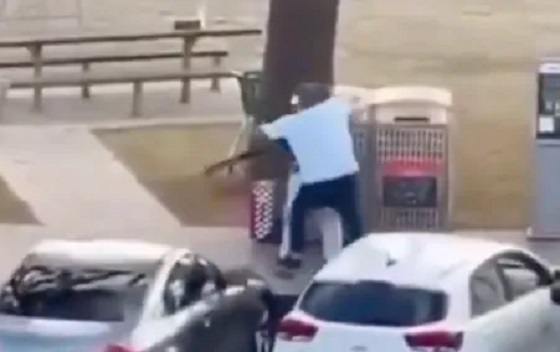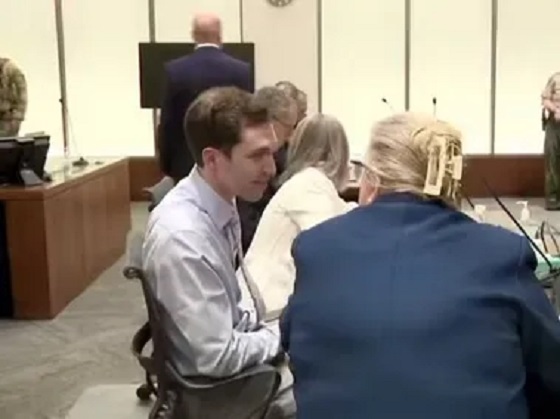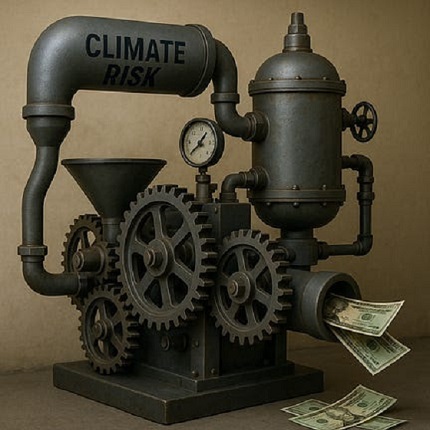Crime
RCMP response not a factor in cell death

April 09, 2019
On May 13, 2017 ASIRT was directed to investigate the circumstances surrounding the death of a 32-year-old man, who went into medical distress and later died following a period of custody at the Wood Buffalo South Policing Facility in Fort McMurray, Alberta.
On May 11, 2017, RCMP officers entered and searched a residence in Fort McMurray as part of a drug trafficking investigation. Once inside the residence, police located the 32-year-old man behind a locked door to one of the residence’s suites. Police negotiated with the man through the locked door, and ultimately, the man voluntarily emerged from the suite. Inside that residence, they located numerous items consistent with drug trafficking and the man was placed under arrest. The man was only wearing underwear upon arrest, and officers located clothing for him and assisted him in dressing, as he was handcuffed. RCMP transported the man to the Wood Buffalo South Policing Facility, and although the officers who dealt with him upon arrest and during transport observed some signs consistent with intoxication, there were no medical concerns based upon the man’s presentation and behaviour. Upon arrival at the facility, the man was searched, provided access to a phone, and placed inside a holding cell.
Once the man was booked into the holding facility, his movements were captured on CCTV video, providing a detailed record of the man’s time in custody. The majority of this time was unremarkable, however on two occasions, the man’s condition or behaviour raised concern with the civilian guards at the facility, and on those occasions, RCMP officers immediately responded to the man’s cell to check on his well-being. On one occasion, when the man appeared to be having some respiratory issues, EMS attended with the RCMP member but the man refused treatment, repeatedly indicating that he only had a cold. Based on subsequent observations made by an officer, a strip search was conducted but did not reveal any illicit substances on his person.
In the early hours of May 13, 2017, the man asked to call his lawyer again, and was taken to the phone room to make a call. While in the phone room, the man went into medical distress. RCMP officers immediately responded to the phone room, contacted EMS, and provided first aid to the man. EMS arrived minutes later, assumed care of the man, and transported him to hospital, where the man was later pronounced deceased.
An autopsy determined the cause of death was cocaine and fentanyl toxicity. Post-mortem toxicology reports revealed a potentially lethal level of cocaine in the man’s bloodstream, as well as metabolites of both cocaine and fentanyl. A small, torn “baggie” consistent with drug packaging was located inside the man’s stomach at autopsy.
While it is impossible to determine with absolute certainty, based on the evidence, it is a reasonable inference the man used the brief period of advance awareness of his forthcoming arrest to conceal drugs within his body that later led to him going into medical distress and ultimately resulted in his death. This tragic conclusion is only available through the compilation of the observations of numerous individual witnesses, the analysis of dozens of hours of CCTV footage, an autopsy and post-mortem toxicology analysis that provide a complete picture of what was a medical death. It is this hindsight that allows for an understanding of why the man died.
In all of the circumstances, while the man’s death is unquestionably tragic, the actions of the officers who dealt with him demonstrated concern for his well-being and responsiveness to his medical needs. The care and supervision provided to the man was reasonable and demonstrates genuine concern for his safety. There are no reasonable grounds to believe the conduct of any officer would constitute a criminal offence. As such, no charges will be laid in this case.
Crime
Hero bystander disarms shooter in Australian terror attack

Insane footage shows a bystander attacking and disarming one of the terrorists, who appears to have been armed with a long rifle, during today’s shooting attack on an event celebrating Hanukkah at Bondi Beach in Sydney, Australia. pic.twitter.com/mJceco22bJ
— OSINTdefender (@sentdefender) December 14, 2025
The chaos that struck Australia on Sunday night produced one moment of astonishing courage: a Sydney shopkeeper, armed with nothing but instinct and grit, charged a gunman at Bondi Beach and wrestled the rifle out of his hands as terrified families ran for cover. Authorities say the act likely prevented even more deaths in what officials have already called an antisemitic terror attack that left 12 people dead and dozens wounded during a Hanukkah celebration along the water.
The hero has been identified as 43-year-old fruit shop owner Ahmed Al Ahmed, a father of two who happened to be nearby when gunfire erupted at the beachfront event “Hanukkah by the Sea,” which had drawn more than 200 people. Footage captured the moment he marched toward the shooter, grabbed hold of the rifle, and overpowered him in a brief, violent struggle. As the gunman hit the pavement, Al Ahmed momentarily pointed the weapon back at him but didn’t fire, instead placing it against a tree before another attacker opened up from a bridge above. He was hit in the hand and shoulder and is now recovering after emergency surgery.
A relative told Australia’s Channel Seven that Al Ahmed had never handled a gun in his life. “He’s a hero — he’s 100 percent a hero,” the family member said. New South Wales Premier Chris Minns echoed the praise, calling the scene “unbelievable,” adding, “A man walked up to someone who had just fired on the community and single-handedly disarmed him. Many people are alive tonight because of his bravery.”
Police say two shooters stepped out of a vehicle along Campbell Parade around 6:40 p.m. and began firing toward the beach. One gunman was killed, the other is in custody in critical condition. Detectives are also investigating whether a third attacker was involved, and bomb units swept the area after reports that an explosive device may have been planted beneath a pedestrian bridge. The toll is staggering: 12 dead, including one shooter, and at least 29 wounded — among them children and two police officers.
Prime Minister Anthony Albanese condemned what he called “a targeted attack on Jewish Australians on the first day of Hanukkah,” saying, “What should have been a night of joy and peace has been shattered by this horrifying evil attack.” Emergency crews flooded the beach as hundreds of panicked people sprinted away from the gunfire. Video shows one attacker firing down toward the sand from the bridge behind Bondi Park before being shot himself in a final standoff captured by drone footage. Both gunmen appeared to be carrying ammunition belts, with witnesses estimating up to 50 rounds were fired.
Australian police have cordoned off properties linked to the suspects and continue to canvass Bondi for additional threats. What remains clear is that Sunday’s attack was met with extraordinary acts of self-sacrifice, none more dramatic than a shopkeeper from Sutherland who walked into gunfire to stop further slaughter.
Crime
Terror in Australia: 12 killed after gunmen open fire on Hanukkah celebration

One of the suspected gunmen of the Bondi Beach massacre shooting in Australia has been identified as Naveed Akram
What was supposed to be a peaceful Sunday evening celebration of Hanukkah on one of the world’s most famous beaches instead descended into chaos and bloodshed, as two attackers opened fire on crowds gathered at Sydney’s Bondi Beach, killing 12 people — including one of the gunmen — and injuring at least 11 others.
The violence erupted shortly after 5 p.m. local time, just as more than a thousand people were gathering for “Hanukkah by the Sea,” an annual event held near a playground at the Bondi foreshore. According to Australian outlets, the shooting began as families were lighting candles and singing, sending parents scrambling to shield children and worshippers diving for cover along the promenade.
New South Wales Premier Chris Minns confirmed late Sunday that one attacker was killed at the scene and a second was arrested. He said the evidence already points unmistakably toward an anti-Jewish terror attack. “What should have been a night of peace and joy was shattered by a horrifying, evil attack,” Minns told reporters, noting investigators believe the plot was “designed to target Sydney’s Jewish community.”
NSW Police Commissioner Mal Lanyon said well over a thousand people were present when the shooting started, including two state police officers who were among those struck by gunfire, according to ABC News. Police also located what appeared to be an improvised explosive device in the vicinity shortly after the initial gunfire. Bomb technicians neutralized the device while officers locked down the area and urged residents to shelter in place.
Around 9 p.m., with ambulances and tactical units pouring in, authorities described the unfolding chaos as a “developing incident” and warned anyone nearby to stay indoors. Multiple victims were treated on the sand and the surrounding walkways before being rushed to hospitals across Sydney.
As investigators piece together the attackers’ movements and motive, officials say the toll could have been even worse given the size of the crowd and the presence of children throughout the event. What remains is a shaken city, a grieving Jewish community, and a country once again confronting the threat of political and religious extremism on its own soil.
-

 Alberta2 days ago
Alberta2 days agoThe Recall Trap: 21 Alberta MLA’s face recall petitions
-

 illegal immigration2 days ago
illegal immigration2 days agoUS Notes 2.5 million illegals out and counting
-

 International2 days ago
International2 days agoTyler Robinson shows no remorse in first court appearance for Kirk assassination
-

 Daily Caller1 day ago
Daily Caller1 day ago‘There Will Be Very Serious Retaliation’: Two American Servicemen, Interpreter Killed In Syrian Attack
-

 Energy2 days ago
Energy2 days agoCanada’s future prosperity runs through the northwest coast
-

 Business23 hours ago
Business23 hours agoInflation Reduction Act, Green New Deal Causing America’s Energy Crisis
-

 Automotive1 day ago
Automotive1 day agoPoliticians should be honest about environmental pros and cons of electric vehicles
-

 Crime16 hours ago
Crime16 hours agoTerror in Australia: 12 killed after gunmen open fire on Hanukkah celebration









